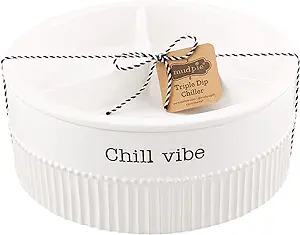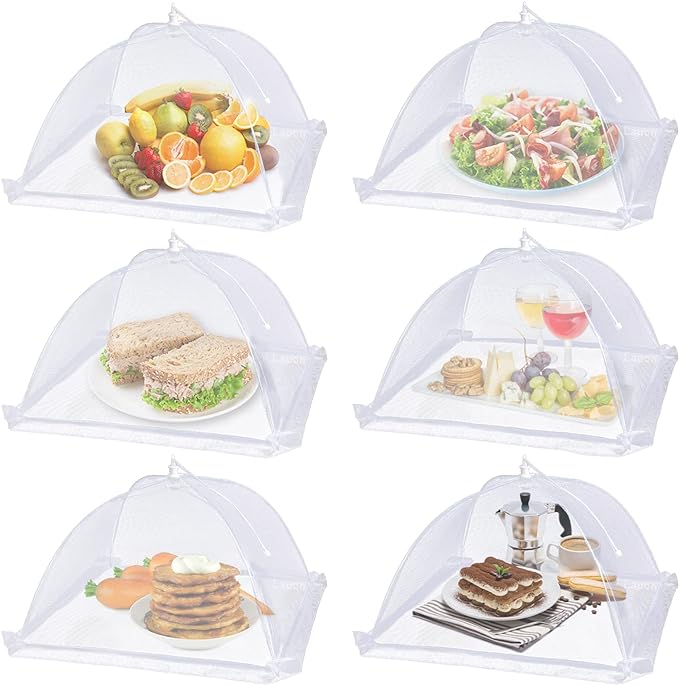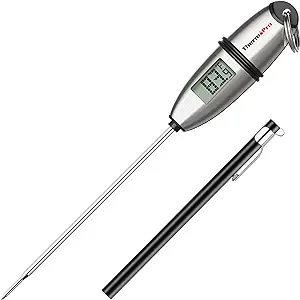Food safety is an important topic, especially since the Centers for Disease Control and Prevention (CDC) estimates that 48 million Americans get food poisoning each year. That’s one in six people! Meanwhile if you’ve ever had food poisoning, you know the effects are not pleasant, with symptoms like nausea, vomiting, diarrhea, and fever.
Ultimately there are many different types of foodborne pathogens, and there are many ways that these pathogens can end up in your food: through soil contamination, on the surface of fruits and vegetables, from contact with animals, or from person to person contact. With so many ways to get sick, how can you ensure that your food is safe to eat?
Top tips for food safety
While there’s no one way to prevent food sickness, there are some rules to follow to keep your food, and all those who enjoy it, safe. We checked in with our team of Registered Dietitians to get their best tips for food safety:
1. Cook food to the proper internal temperature
Food that isn’t cooked thoroughly enough can make you sick. Therefore our top tip for food safety is this one: always be sure to cook meat to the proper temperature before serving.
The handy chart below shows the different internal temperatures at which various types of meat are considered “safe.” Another great food safety tip is to always use a food thermometer, so we’ve recommended a few in our “gear and gadgets” section further down.
Proper internal temperature for meat:
| Category | Food | Temperature (°F) |
| Ground Meat & Meat Mixtures | Beef, Pork, Veal, Lamb | 160 |
| Turkey, Chicken | 165 | |
| Fresh Beef, Veal, Lamb | Steaks, roasts, chops | 145 |
| Poultry | Chicken & Turkey, whole | 165 |
| Poultry breasts, roasts | 165 | |
| Poultry thighs, legs, wings | 165 | |
| Pork and Ham | Fresh pork | 145 |
| Fresh ham (raw) | 145 |
2. Store and serve food at the proper temperature
Meanwhile, storing food at the right temperature is important too, which is our second very important food safety tip. Keep hot food at or above 135°F. And cold foods also need to stay at a certain temperature, so keep cold dishes like deviled eggs, pasta salads, fruit/veggie trays and charcuterie at or below 40°F.
3. Watch the clock
Cooking food to the right temperature will kill off any dangerous pathogens that may be present, but it doesn’t mean that food can be left at room temperature indefinitely. Therefore pay close attention to this next food safety tip: Be aware not only of the proper temperature for your food, but also how long it sits out! Foods kept within the 40-135°F range are in the “temperature danger zone” where food can make you sick. Meanwhile the longer your food is in the danger zone, the greater the chance of foodborne illness.
Above all, the FDA recommends that food not remain in the danger zone for more than two hours. On hot days, that window shortens to one hour. Sometimes the food at your outdoor gathering is left out longer for serving purposes. If so, keep things hot with hot plates or Sterno gas canisters. For cold items, keep them over ice.
3. Be careful with higher-risk foods
Certain foods are at a higher risk of causing foodborne illness, according to the CDC. These include items such as meat and seafood, bean sprouts, eggs, and mayo. It’s not that these foods should be off-limits during the warmer months, but more care has to be taken when enjoying them. Make sure to get bean sprouts from a reliable source and eat them soon after purchasing them. It’s also a good idea to serve these higher-risk foods over ice when serving them outside, so they stay nice and cold.
4. Marinate foods in the refrigerator
Many people think it’s fine to marinate their food at room temperature. However as soon as the meat is pulled out from the fridge, that invisible two-hour clock starts its count down. To keep your food safe, marinate in the refrigerator as recommended by the FDA.
Gear and gadgets we love for food safety
Now that you’ve digested our food safety tips, it’s time to share some products to make your dinner party, barbecue or picnic a healthy success. Below are a few of the items that top our list of favorites.
Mud Pie Triple Dip Divided Chiller

This awesome serving bowl keep foods like veggies and dips cool. A removable triple dip dish nests inside a ceramic chiller, which you fill with ice. Bonus: it’s dishwasher safe.
RTIC Cooler

The RTIC insulated cooler bag is lightweight, durable, and keeps contents cold on your way to an event (and up to 24 hours.)
MEATER Thermometer

This high tech meat thermometer is compatible with a smartphone or Apple watch. Get an alert when your meat is ready!
Food Tents

Use these food tents to keep unwanted bugs and debris away from your food. They are also collapsible for easy storage!
Food Warmer

Keep your food at proper temps during your event with this OVENTE Electric Warming Tray.
Condiment Food Tray

Keep your toppings nice and cool with this condiment food tray you keep on ice!
Digital Food Thermometer

Take the guesswork out of cooking and baking with this handy digital thermometer!
We’ve got more food safety tips!
Craving more food safety tips to keep you and your family healthy? Our Registered Dietitians have plenty to share. At Anderson’s Nutrition, we accept most major insurance, so your session may be fully covered! Use our online scheduler to book an appointment.
Disclosure:
Some of our pages contain affiliate links. Anderson’s Nutrition may receive a commission at no extra cost to you. Meanwhile we only promote products that we have used and verified, and recommend to our clients and friends. As an Amazon Associate, we earn from qualifying purchases. Anderson’s Nutrition is a participant in the Amazon Services LLC Associates Program, an affiliate advertising program designed to provide a means for sites to earn advertising fees by advertising and linking to Amazon.com.

